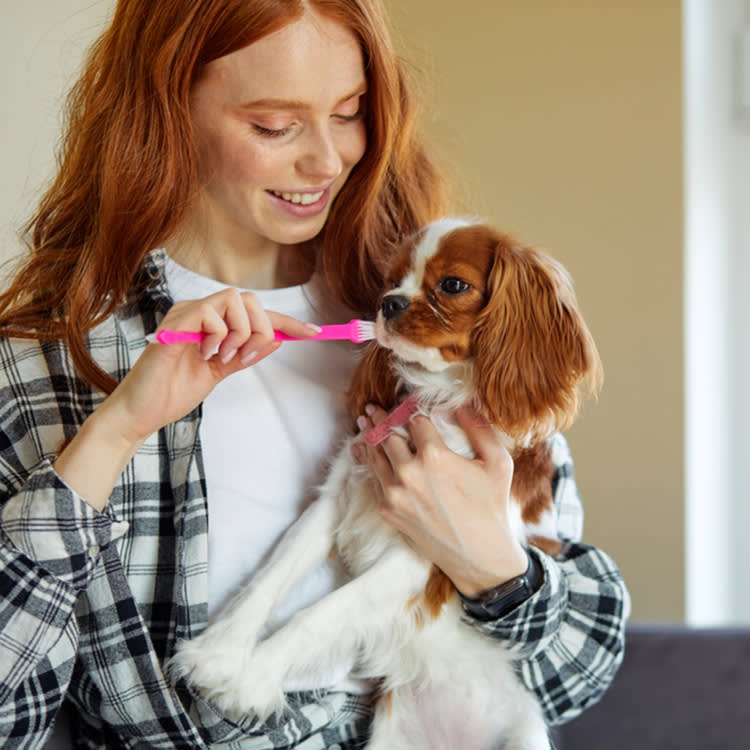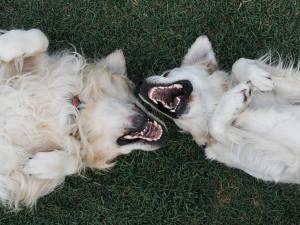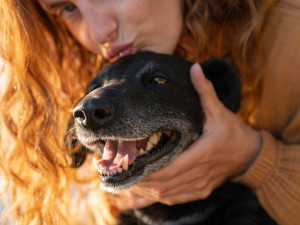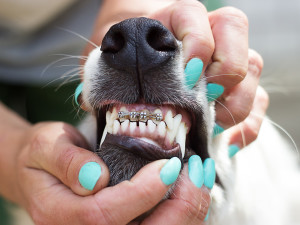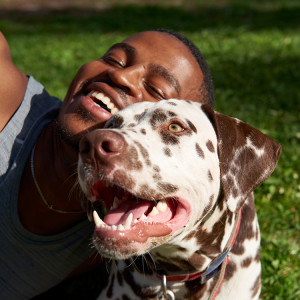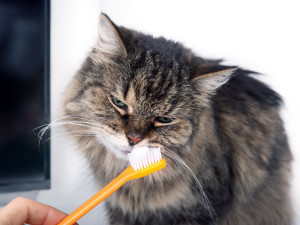How to Deal With Pesky Plaque On Your Dog’s Teeth
What to do if you’ve let your pooch’s pearly whites get past their best
Your stare adoringly into your pet’s eyes, they stare back. Their mouth droops into a happy smile as you scoop them into cuddle. An embrace that is instantly ruined when you catch a whiff of their fetid breath. If this scenario sounds all too familiar then we might be able to help.
What is plaque?
Just like humans, dogs suffer from plaque: a clear, sticky substance made up of saliva, food particles and bacteria. It coats your pet’s teeth every time they eat, building up over time if not removed.
How do I know if my dog has plaque on their teeth?
Plaque itself is very difficult to see but if your dog is well behaved enough to allow you to look closely at their teeth you will see an off-white film coating their teeth. However, plaque is just the start of a cascade of worsening dental disease symptoms.
What happens if I don’t treat plaque on my dog’s teeth?
Whilst plaque initially causes mild inflammation and bad breath, over time it will build up. Plaque hardens and mineralises to form tartar, also known as calculus. Tartar is a rough, hard, yellowy brown coating that is much more difficult to remove than plaque. Tartar can build up to such an extent that it pushes the gum line back. This gum recession exposes the roots of the tooth leading to sensitivity and pain.
The other problem that plaque creates is via its rough surface, which provides a perfect breeding ground for bacteria. This bacteria causes inflammation of the gums, also known as gingivitis, making them red, painful and prone to bleeding. As gingivitis progresses it can damage the periodontal structures holding the teeth in place, causing them to fall out. In extreme cases, the bacteria can enter the bloodstream leading to sepsis and causing infection in various organs around the body.
If you have ever experienced the all-consuming throb of toothache, you will have some inkling into the kind of pain your pet may be experiencing with dental disease. It can be surprising how much this chronic pain will zap the life from your pet. Many animals with severe dental disease will continue to eat, so this is not a reliable indicator of how much your pet is suffering.
How do I prevent and remove plaque from my dog’s teeth?
Realistically, all dogs will develop plaque. The key is removing it regularly before it can cause a problem.
You can clean your pet’s teeth at home using a toothbrush just like you would your own. Ideally, this should be done daily, but even infrequent brushing is better than non-existent brushing, so choose a schedule that you can realistically stick to.
It is best to start this process from an early age, however, older dogs can be trained to accept it, too. Find your pet a designated toothbrush suitable for their size along with a pet safe toothpaste. Start by applying the paste with your finger and then slowly introduce the brush, getting your pet used to the sensation gradually. Stop regularly to reward them.
If this sounds like an impossible feat, commercial chews are also available as a stopgap whilst you work up to brushing but you must ensure your pet chews them rather than inhaling them whole otherwise the object is defeated. These chews often contain many calories so be careful if your pet is watching their waist line. Chlorhexidine mouthwashes can also help by reducing the amount of bacteria in your pet’s mouth.
Should I get my dog’s teeth ultrasonically cleaned?
Ultrasonographical cleaning is the most effective way to remove plaque from your pet’s teeth without damaging the enamel. It is usually performed by a vet or vet nurse under general anaesthesia. Although some animals may tolerate conscious cleaning, an anaesthetic is preferredopens in new tab as it allows a thorough examination of all areas of the mouth, treatment of any diseased areas as well as cleaning below the gum line. Cleaning without anaesthetic may make your pet’s teeth appear clean, but doesn’t remove the bacteria from below the gum line where it will do most damage. If you are concerned about putting your pet through an anaesthetic procedure then speak to your vet for some reassurance.
Your vet will often perform pre-anaesthetic blood tests to identify any underlying disease that could affect your pet’s response to anaesthetic. They will usually place your pet on IV fluids to support their circulatory system during the procedure. The risk of pain, illness and suffering caused by untreated dental disease far exceeds the risks of a general anaesthetic for most patients. Many pets are sadly euthanised towards the end of their life due to untreated dental disease.
Dental disease is best tackled early before it has time to cause serious problems. By incorporating a few simple steps into your pet’s routine you can help reduce the amount of plaque your pet has to deal with. No matter how well you look after your pet’s teeth, dental disease is unavoidable. An oral examination under anaesthetic is the best way to identify and treat dental disease and thoroughly clean your pet’s teeth. Untreated dental disease is a serious welfare issue leading to significant pain and impacting on your pet’s quality of life. In the most severe cases it can lead to life threatening complications. Don’t underestimate it.
